Primula (Primrose) is one of the very first plants that begins to delight the eye in early spring. He does not need special care, and thanks to the variety of varieties, you can come up with unusual compositions in the flower bed. From the article we learn how the planting and care of the perennial garden primrose takes place.
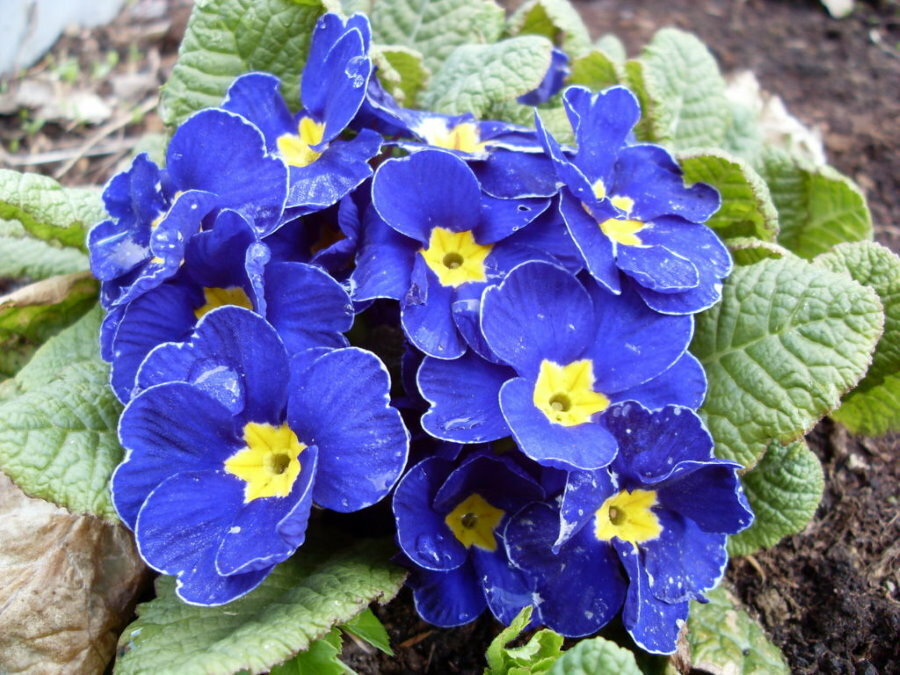
The people love primrose for earlier flowering, unpretentiousness and a variety of species and colors
Beautiful garden decoration with flowers - flower beds with primroses
Content
- Beautiful garden decoration with flowers - flower beds with primroses
- Varieties of garden primrose: variety of species
- Primrose breeding methods, planting tips
- Features of growing and care
- All about growing primrose in one video
- Photo examples of landscape design with perennial garden primrose
Perennial garden primrose is a plant that will look great in any garden. By combining several varieties, you can get an amazing floral arrangement that will certainly be admired.
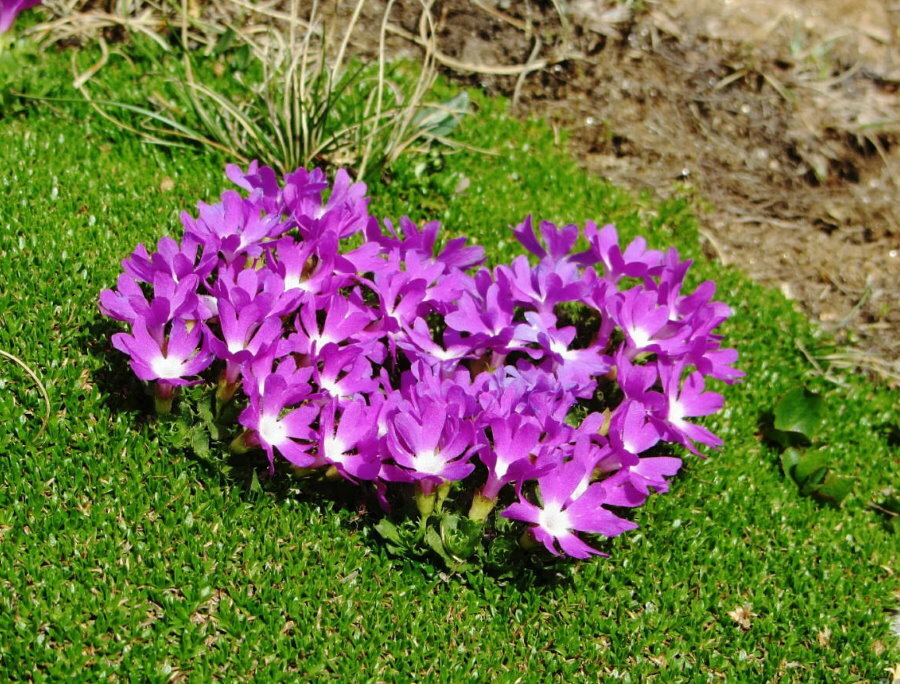
In the wild, primrose is found in any wet region with fertile soil.
Primrose flowers bloom in March-April, but flowering is often observed in early summer.
Primrose is best suited for low beds and rocky gardens. You can even plant it on a lawn. You can see the plant next to paths, bushes, under trees.
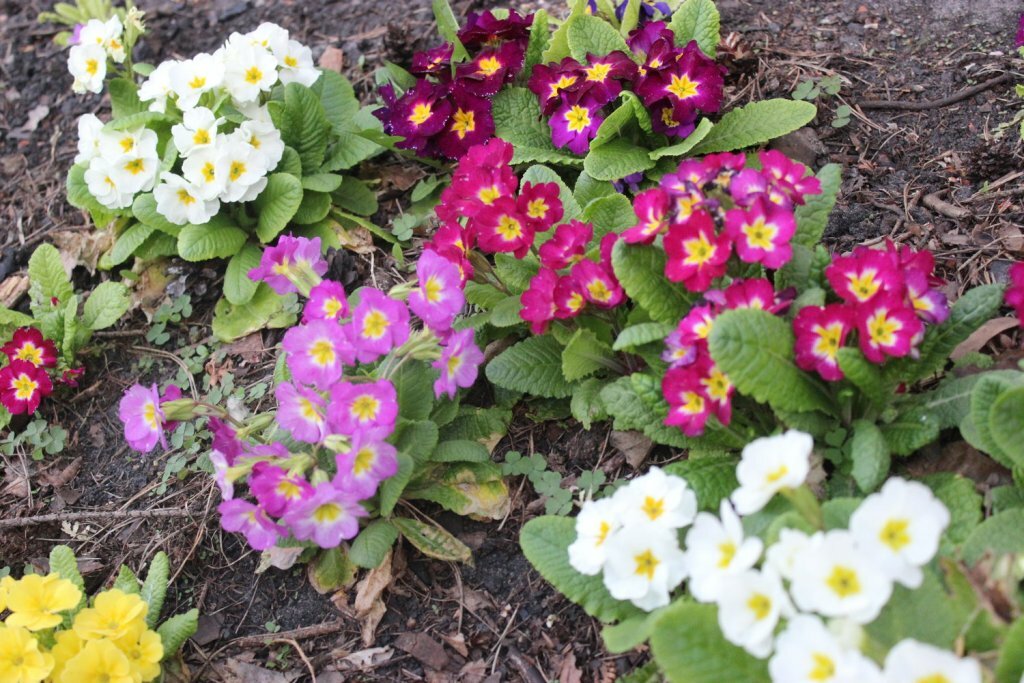
Garden perennial primrose is one of the first to bloom
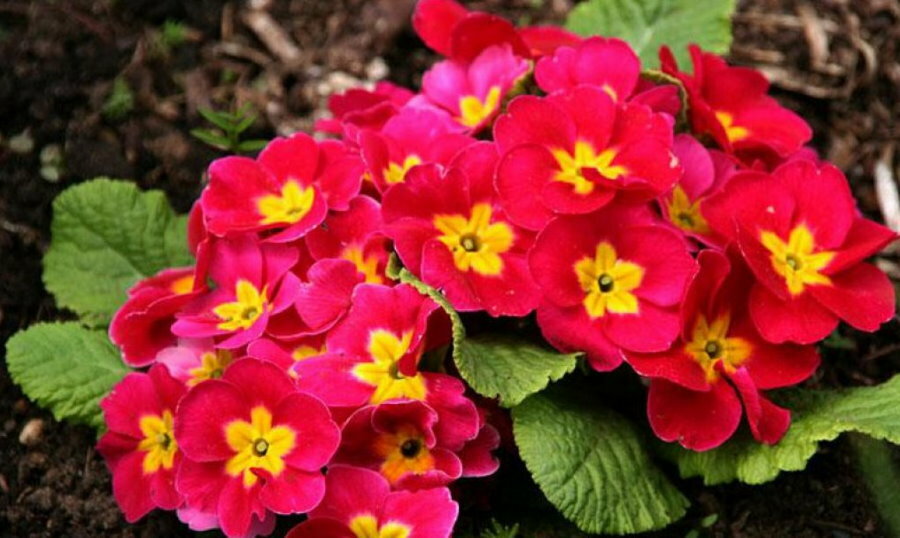
Often everything starts with one copy, and then there is a desire to plant as many of these beautiful flowers as possible in your garden.
The primrose will not get lost in the flowerbed and among other plants, so it can complement any flower arrangement. And if there is a fountain or a small lake on the site, then primrose bushes will look the best along the coast. The plant is often chosen for landscaping urban areas. It is used to decorate flower beds, flower beds, and a primrose is planted next to monuments and other significant places.
Stemless primrose species (edged, smallest, fluffy) are great for a rock garden. The culture goes well with climbing plants. A similar neighborhood can decorate the entrance to a garden or house.
Popular varieties of stemless primrose:
We can confidently say that primrose in landscape design occupies a special place, since it is an unpretentious decorative perennial.
Primrose leaves can contain chemical compounds that can cause severe allergies.
Varieties of garden primrose: variety of species
Today, there are a large number of varieties of this amazing plant, so they were divided into 30 sections. Consider the types and varieties that gardeners most often choose:
- Common primrose. The homeland of this plant species is considered to be Central and Southern Europe. The leaves are characterized by an elongated shape, their length reaches 25 cm, and their width grows to 6 cm. The height of the peduncles can be different (from 6 to 20 cm), each of which bears one white or pale yellow flower. By mid-April it is already blooming, but sometimes flowering is observed in September. The most popular varieties of this species are: Giga White, Virginia, Cerulea.
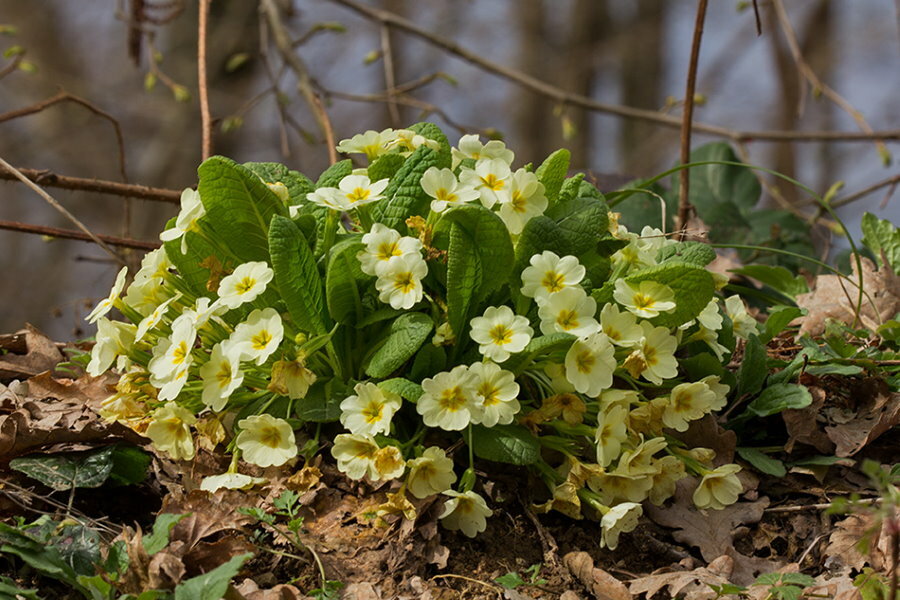
In the photo, primrose ordinary variety Virginia
- Primrose high. The leaves are oval (with a finely toothed edge). The length varies from 5 to 20 cm, and the width can reach 7 cm. Peduncles have from 5 to 15 flowers of a yellow hue and a diameter of no more than 2 cm. The bushes can be not too high (about 10 cm), or stretch up to 35 cm in height. Flowering is quite long (up to two months), the first flowers appear in April. Popular varieties: Gelle Farben, Duplex, Goldgrand, Rosea.
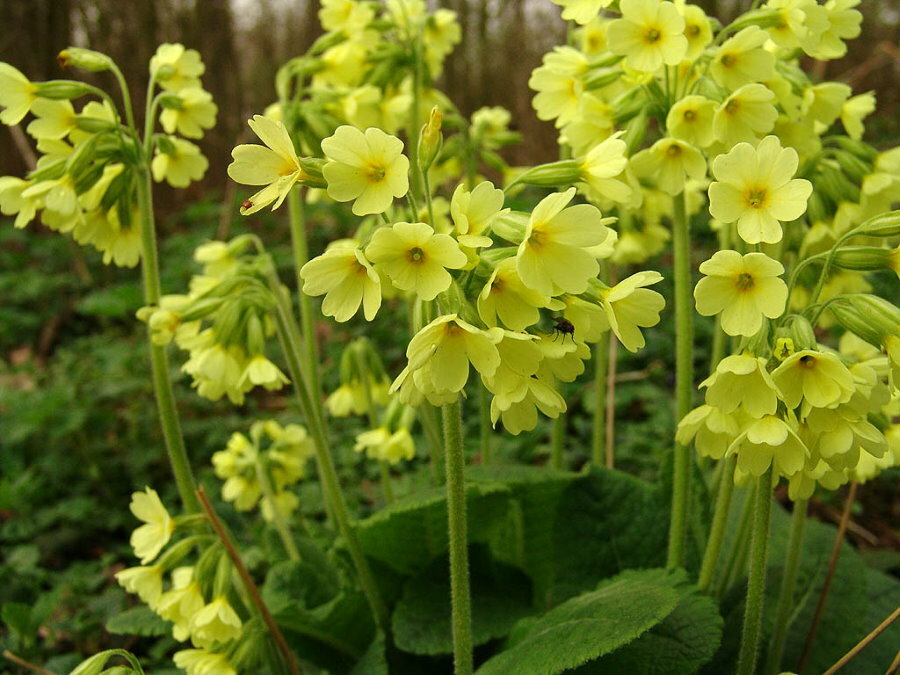
Peduncles of tall primrose are loose umbrellas, consisting of 3-20 flowers
- Spring primrose. It is also called medicinal. The length of its leaves can reach 20 cm, and grow up to 6 cm wide. The flowers themselves are of a delicate yellow hue, at the base of which specks of orange are noticeable. The first flowers appear in April, the flowering period ends in June.
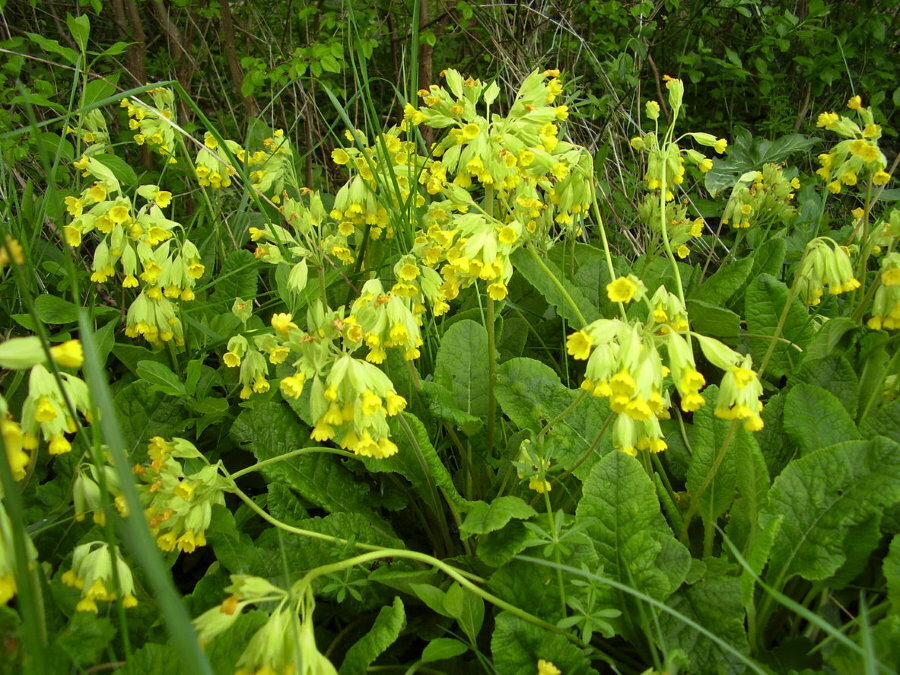
Spring primrose is an inhabitant of dry lawns, edges of deciduous forests. Ideal for decorating the most uncomfortable corners of the summer cottage
- Primula of Siebold. Flowering is observed not in spring, but already in the first month of summer. Flowers can be either pink or lilac. The foliage of this ephemeroid immediately dies off after the end of the flowering period of the bush.
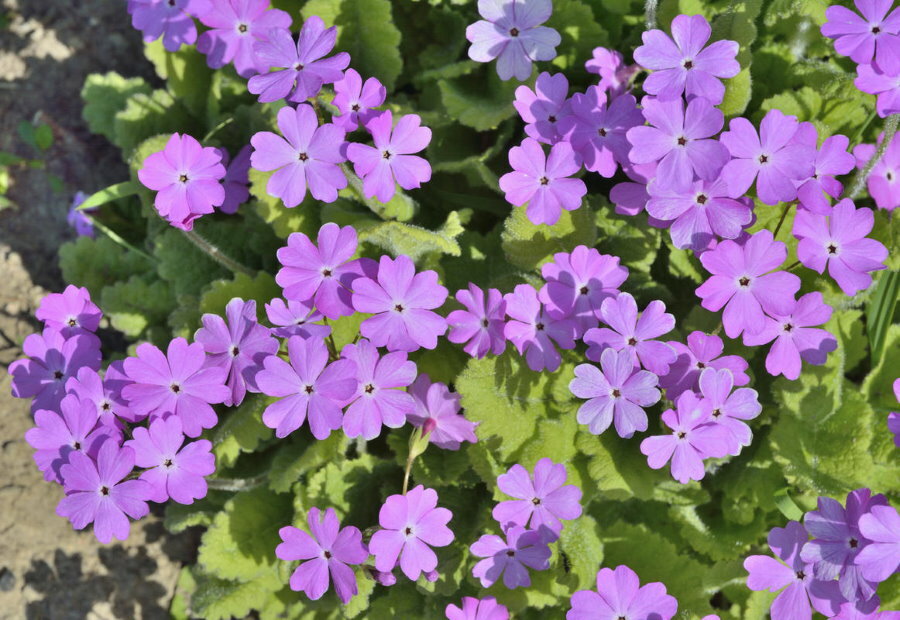
Siebold's primrose is a graceful perennial native to Japan that grows up to 30 cm in height
Primrose breeding methods, planting tips
There are three ways of reproduction of perennial primrose:
- Seeds.
- By dividing the bush.
- Cuttings of a leaf type.
In the first case, the seeds must be planted in containers at the beginning of May. The most suitable time for planting outdoors would be September or October. For the purpose of disinfection, the seeds are pre-treated with a solution of potassium permanganate.
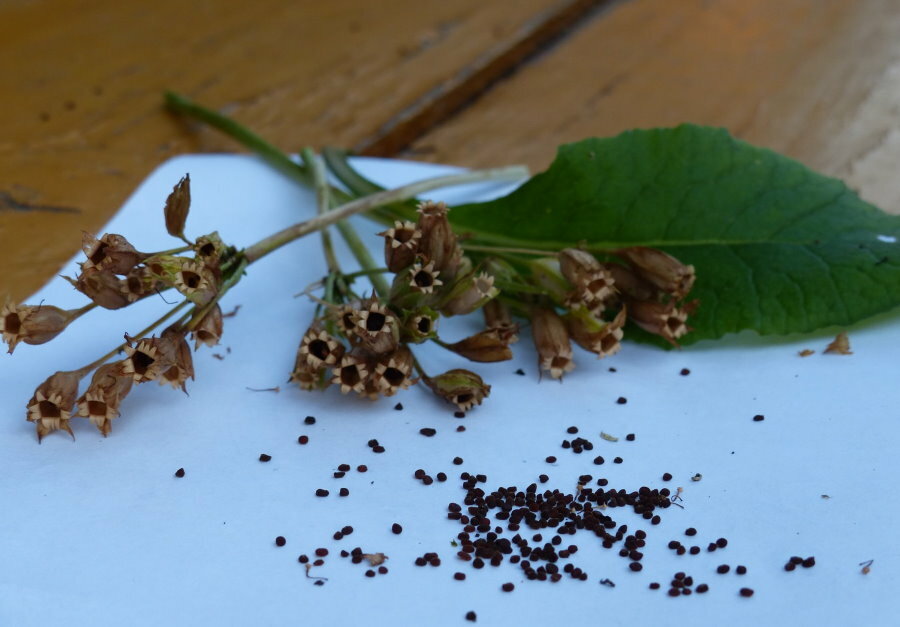
Primrose seeds can be bought at any flower shop or prepared by yourself
The dried seeds are placed in a container with the mixture, after which it is covered with plastic wrap. In the room where the containers with seeds will be located, the air temperature should be from +19 to + 22 ° С. The film can be removed as soon as the seeds germinate.
If it is decided to propagate the primrose by dividing the bush, then this is done like this (the optimal time is June):
- The root system of the dug bush is divided into several parts, each of which must necessarily have a shoot.
- In order to stimulate the roots, dry fibers must be removed.
- Next, the plant is planted in a permanent place in the open ground.
To protect the plant from pests and diseases, it is recommended to water it with a fungicidal solution.
The third way is propagation by cuttings. You will need a cut leaf that has a growth point. Cut in half, it is planted in a container with peat, which must be covered with glass. This is done to create a greenhouse effect. The room temperature should be +17 ° С.
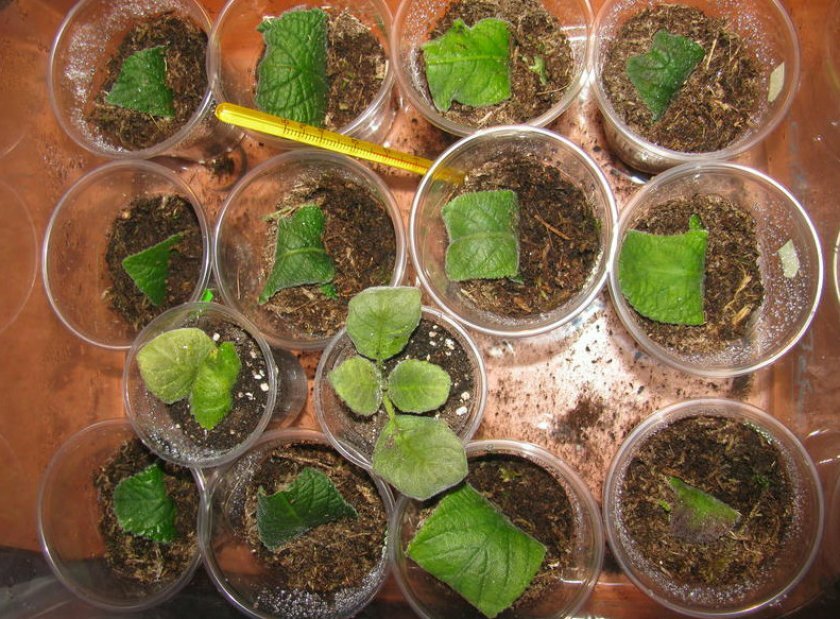
Leaf cuttings of primrose is not particularly difficult if you follow the instructions exactly
The glass is removed daily in order to water the cutting. The first root should appear after three months, and as soon as the first leaves appear, it can be planted in open ground. Flowering should be expected no earlier than in 5-6 months.
Since olden times, a solution has been prepared from primrose for colds and strengthening of immunity.
Features of growing and care
A perennial primrose, planting and caring for which does not require much knowledge, is an unpretentious plant. At the same time, it is important to know the basic rules of growing and care. The soil needs to be moistened and loosened regularly (once a week is enough). In severe drought, water the plant at least 2 times a week. The required volume of water is 3 l / sq.m.
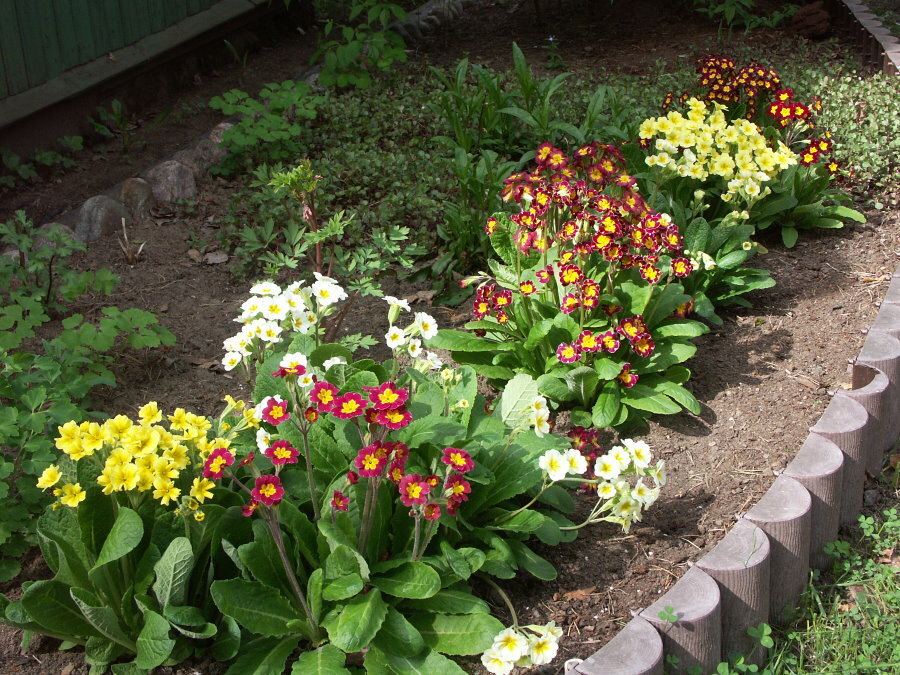
All varieties of garden primrose are quite unpretentious and able to grow in temperate climates.
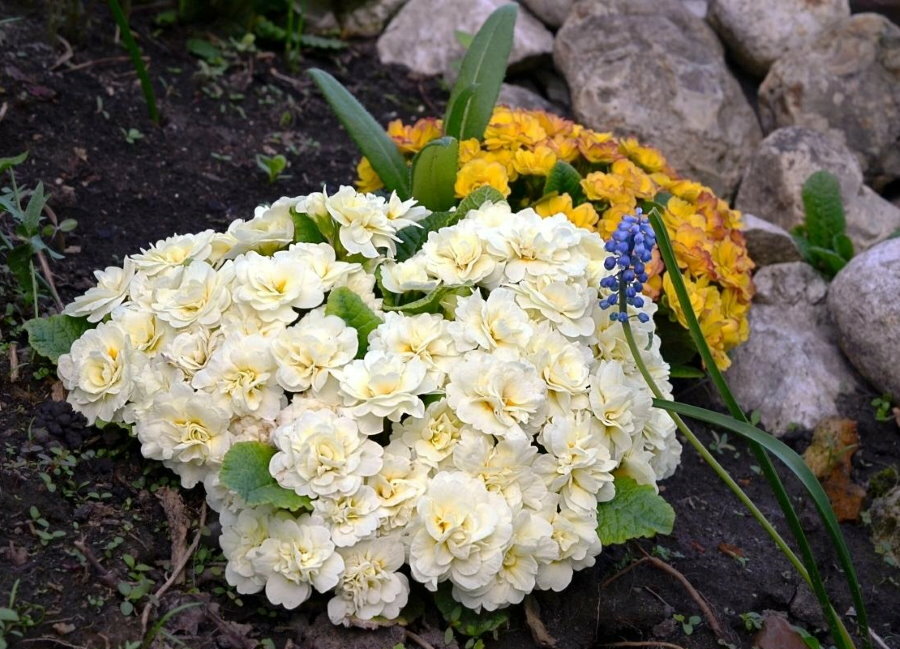
Penumbra is the preferred place for growing primroses, in the southern regions it is better to choose more shaded places for planting
Perennials are also fed once a week. Top dressing is required for primrose from the moment the first leaves appear, but with the end of flowering, it is no longer necessary to feed the primrose. For this, a complex mineral fertilizer is chosen. The dosage should be less than 2 times that indicated on the package.
It is necessary to transplant the primrose every 4-5 years. It is imperative to divide the bushes, since during this time they grow quite strongly.
All about growing primrose in one video
Photo examples of landscape design with perennial garden primrose
Primrose: a photo of flowers in a flower bed can be seen below:
Photo of primrose in garden landscaping:



